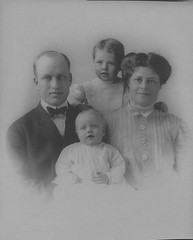 I interviewed Doc Searls recently, and he said that he likes to think of what he does as releasing ideas as "snowballs" to see if they gain momentum and strength as they roll down through the blogosphere. OK, so here's an Ed Tech "snowball."
I interviewed Doc Searls recently, and he said that he likes to think of what he does as releasing ideas as "snowballs" to see if they gain momentum and strength as they roll down through the blogosphere. OK, so here's an Ed Tech "snowball."One of the intriguing elements of the "read/write" web is the opportunity that all students now actually have for their work to gain a wider audience and to truly contribute to the sum of public knowledge. Here is one idea to give them a taste of this truly remarkable change.
While it is unlikely that you're going to have a student who will unearth some new, significant information about Lincoln or Napoleon (although this may also happen), it is likely that all of your students could become the world-experts on their grandparents, great-grandparents, or other long-lost relatives. Those boxes of old family photos, newspaper clippings, and letters in their attics or closets or basements--combined with the power of wikis, blogs photo-sharing, and podcasting--give your student the chance to become primary-source historians.
This isn't just important (and I think it is important, since this kind of a project can help students better understand their heritage and what history is, as well as actually providing valuable historical information), but it can be very exciting. I had an experience that convinced me of that.
Some years ago I received an email from a woman asking if I had ever heard of a "Kate Hargadon" (my same last name), who had been the traveling companion of her grandmother on the Titanic. This intrigued me, so I searched the web to find that all the Titanic websites listed a young woman age 17, from Ballysodare, Co Sligo, Ireland, whose name was spelled "Kate Hagardon." This young woman boarded the Titanic at Queenstown and, sadly, died in the sinking of the ship. Because all of the members of the "Hargadon" family trace back to County Sligo in Ireland, it seemed possible to me that "Hagardon" was actually mis-transcribed from "Hargadon." I wrote the Irish Titanic Historical Society, who had someone look up the original passenger manifest, and found that "Kate Hargardon" was in fact "Kate Hargadon." They in turn informed all of the Titanic historical sites, and for many years every mention of "Kate Hargadon" carried a footnote acknowledging me as the "historian" who had discovered this.
Now, I majored in history in college, but nothing I did in school compared with how exciting and fun it this little historical adventure was. Truth be told, it wasn't anything earth-shattering, but it had some small historical significance, and it was me being involved in history in a very real and tangible way. The read/write web now provides an opportunity for students to experience this same kind of excitement. Let me know what you think.